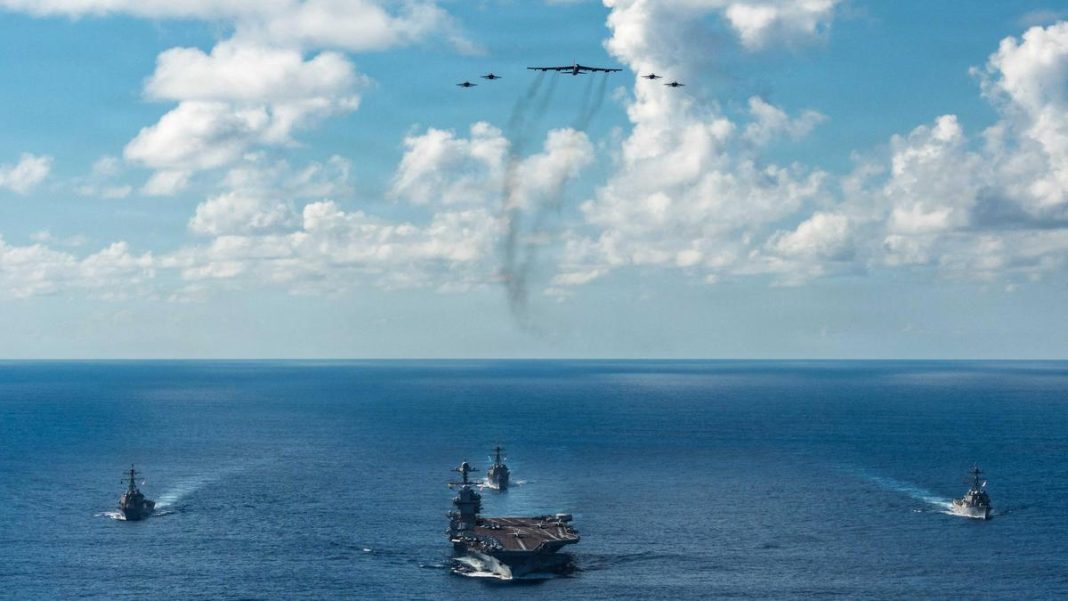US Aircraft Carrier Arrives in Caribbean in Major Venezuela Buildup
The USS Gerald R. Ford, America’s most advanced aircraft carrier, has arrived in the Caribbean Sea, marking the largest US military buildup in the region in generations. The deployment comes amid escalating tensions with Venezuela and ongoing US strikes against suspected drug trafficking vessels.
Key Takeaways
- USS Gerald R. Ford completes largest US military buildup in Caribbean in generations
- Operation Southern Spear includes nearly a dozen ships and 12,000 personnel
- US has conducted 21 strikes killing 83 people since September
- Venezuela condemns exercises as “act of aggression”
Major Military Deployment
The carrier strike group transited the Anegada Passage near the British Virgin Islands on Sunday, November 16, 2025. The arrival completes “Operation Southern Spear,” which includes nearly a dozen Navy ships and approximately 12,000 sailors and Marines.
Rear Adm. Paul Lanzilotta, commanding the strike group, stated the force will “protect our nation’s security and prosperity against narco-terrorism in the Western Hemisphere.”
Escalating Strikes and Regional Tensions
The carrier’s arrival coincided with the military’s announcement of its latest deadly strike on a small boat allegedly transporting illegal drugs. Since early September, US strikes in the Caribbean and eastern Pacific have killed at least 83 people in 21 attacks.
In Trinidad and Tobago, located just 11 km from Venezuela, troops have begun joint training exercises with US military that will continue through much of the week. Foreign Minister Sean Sobers described these as the second such exercises in less than a month, aimed at tackling violent crime linked to drug shipments.
Venezuela’s government has condemned the training exercises as an act of aggression but had no immediate comment on the aircraft carrier’s arrival.
Administration’s Stance and Regional Pushback
The Trump administration insists the military buildup focuses on stopping drug flow into the US, though it has provided no evidence supporting claims that those killed were “narcoterrorists.” Army Secretary Dan Driscoll revealed US troops are also training in Panama, with the reactivation of jungle school training.
Secretary of State Marco Rubio stated the US does not recognize Nicolás Maduro as Venezuela’s legitimate leader, calling his government a “transshipment organisation” cooperating with drug traffickers.
Maduro, facing US narcoterrorism charges, accused the US government of “fabricating” a war against him. On social media, he declared Venezuelans “ready to defend their homeland against any criminal aggression.”
Expert Analysis and Regional Concerns
Elizabeth Dickinson, International Crisis Group’s senior analyst for the Andes region, noted: “This is the anchor of what it means to have U.S. military power once again in Latin America. And it has raised a lot of anxieties in Venezuela but also throughout the region. I think everyone is watching this with sort of bated breath to see just how willing the U.S. is to really use military force.”
Experts remain divided on whether American warplanes might strike land targets inside Venezuela, but the 100,000-ton warship clearly serves as a powerful message to Caracas.




